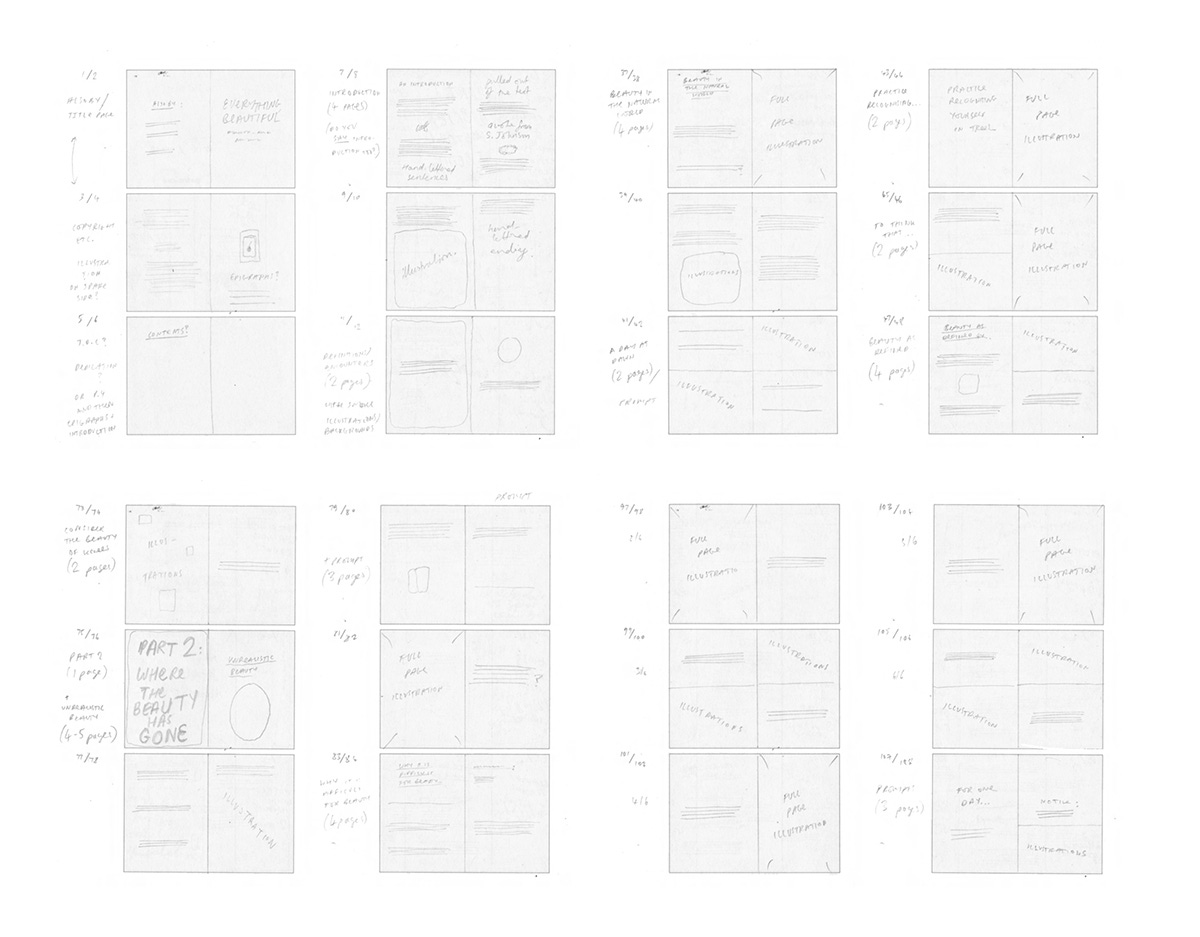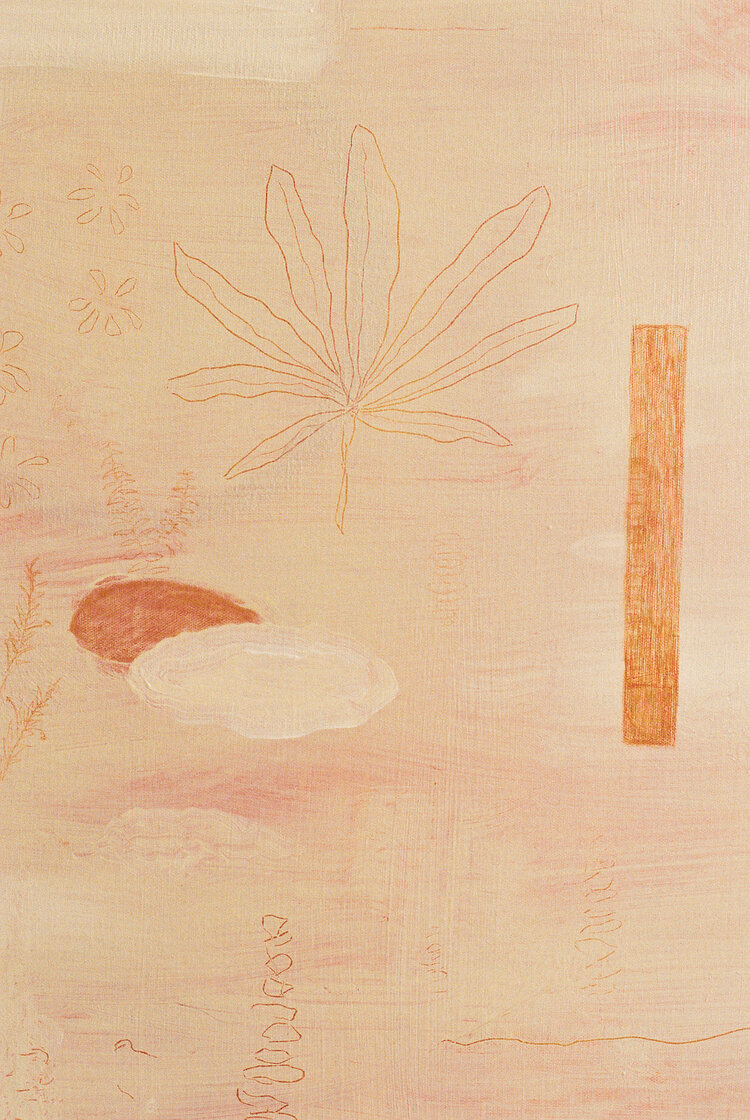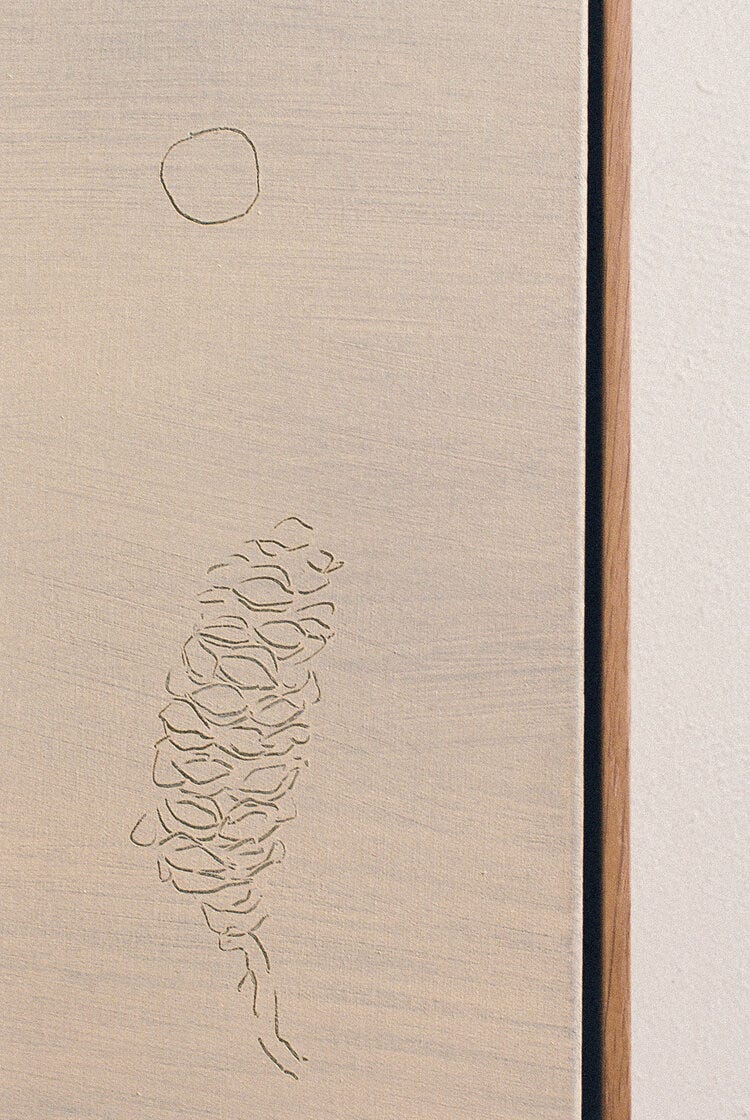No.161
It has, in many ways, been an impossible thing to try and anchor the summer. I looked down at my feet and then it was September; the birds seem more grey and already the colder shades of blue seem to be struggling to make it past the cloud cover. I find myself wanting to decide on some event, or some place or person that can contain the summer and make sense of it, but so far efforts have proved an overall unsuccessful. It’s hard to make physical sense of longer stretches of time when they are marked almost entirely by daily, mirror-like routines and the humming of a house’s interior life—I put laundry in, you take laundry out, you clear out the fridge, we put shinier food into the cold shelves, I pull out weeds, you take rhubarb out of the garden for dinner.
There are things though, small astonishing minutes or abnormalities that with further distance will probably mark this past summer, like sitting under a twisted, unripe damson tree in a Scottish back garden while talking on the phone to a friend, like sitting out on the water while hundreds of ink-black rooks flew out from the coastline trees towards an island for the night, like a single sunflower opening unannounced in the mess, like you helping my mother choose a houseplant, like the fledgling seagull that we wordlessly guarded as it wandered, hoarsely squawking, in and out of concrete driveways.
When so much has slipped, is continuing to slip, out of our control (read: the news), it can be tempting to reach for large anchors, whether that is relationships or locations or job titles, but the anchors now are small, sometimes so small you don’t see them until whole weeks have passed. You can’t make long-term sense of life in terms of grand declarations and the ownership of things, in terms of wanting and getting, in terms of sweeping, glittery gestures. No, sense is made inside the small, in the accumulation of imperceptible love and the apparently worthless actions: I pull out weeds, you take rhubarb out of the garden for dinner.
WORK-RELATED NEWS:
It is a strange process to try and figure out where, and how, things in a book should go. There can appear to be a logical and sensible way, but this way can often end up feeling off somehow, and there are ways that occur to you while falling asleep that you will almost certainly forget by the morning. In the end my method for Everything, Beautiful has been to lay it all out at once, in a sort of graphite flood, before I could over-think and unpick, and then following on from this comes a period of refinement and gentle rearranging, helped along by perceptive and useful comments from my patient editor.
There is an early November deadline for this book, which is in equal parts daunting and steadying, especially when there are other work commitments that have deadlines sitting both before and after this—in short, I’m not sure whether I’m being pulled or pushed by time or if I’m simply rotating on the spot. The most recent few days have been spent researching and deciding on (or trying to) lettering styles for the book’s 19 sections, or chapter headings. These sections are further split into three parts, or acts, the second of which you can just about see above in a tiny pencil scribble: ‘Where The Beauty Has Gone’.
That is, I think, as much as I can tell you at this precise point.
THIS WEEK I FELL IN LOVE WITH:
Paintings by Australian artist Kane Lehanneur, who lives and works on un-ceded Gayemegal land north of Sydney. His work currently seems to lie somewhere between the threatened networks of nature and the falling-apart of the climate, and the layers upon layers of history in both the physical and political landscapes there (my falling in love was not light-hearted this week). Of his series ‘Past The Patio’ (the below images), he writes:
“A story unfolding down the step of my back-door, where a gateway to an unconfined realm of blossoming native flora, begins … [This work] reflects a shift toward personally developing a greater understanding of the revered land, and all her inhabitants, surrounding me.
Each painting manifests a study of the plants indigenous to the Australian Landscape, scratching a surface where introduced species have dominated, for far too long.”
AT THE LIBRARY THIS MORNING:
three books renewed
two books collected, one of them is a large square in format
two books returned
(This process was carried out by an older gentleman, whom I decided when I first encountered him was the epitome of a library for me—softly-spoken, unhurried, you take out one book and he suggests several others, remarks upon the weather. He is my favourite librarian here for reasons that I ended up detailing in the book I’m currently working on.)
I have just finished eating a croissant.
The end.














I spent seven weeks of the summer away from home. After weeks of travelling, I began to perceive that the people around me were in that "longer stretches of time when they are marked almost entirely by daily, mirror-like routines." To be honest, it took some of the fun out of my trip. I wanted them to join me in the excitement or at least to recognize that their lives were actually exciting for me to experience (even driving the city streets of Bristol narrowed to one lane by parked cars). I feel the same kind of excitement when I read other people's substack newsletters. I wonder what it would be like to have weeds and rhubarb--or even a daily routine.